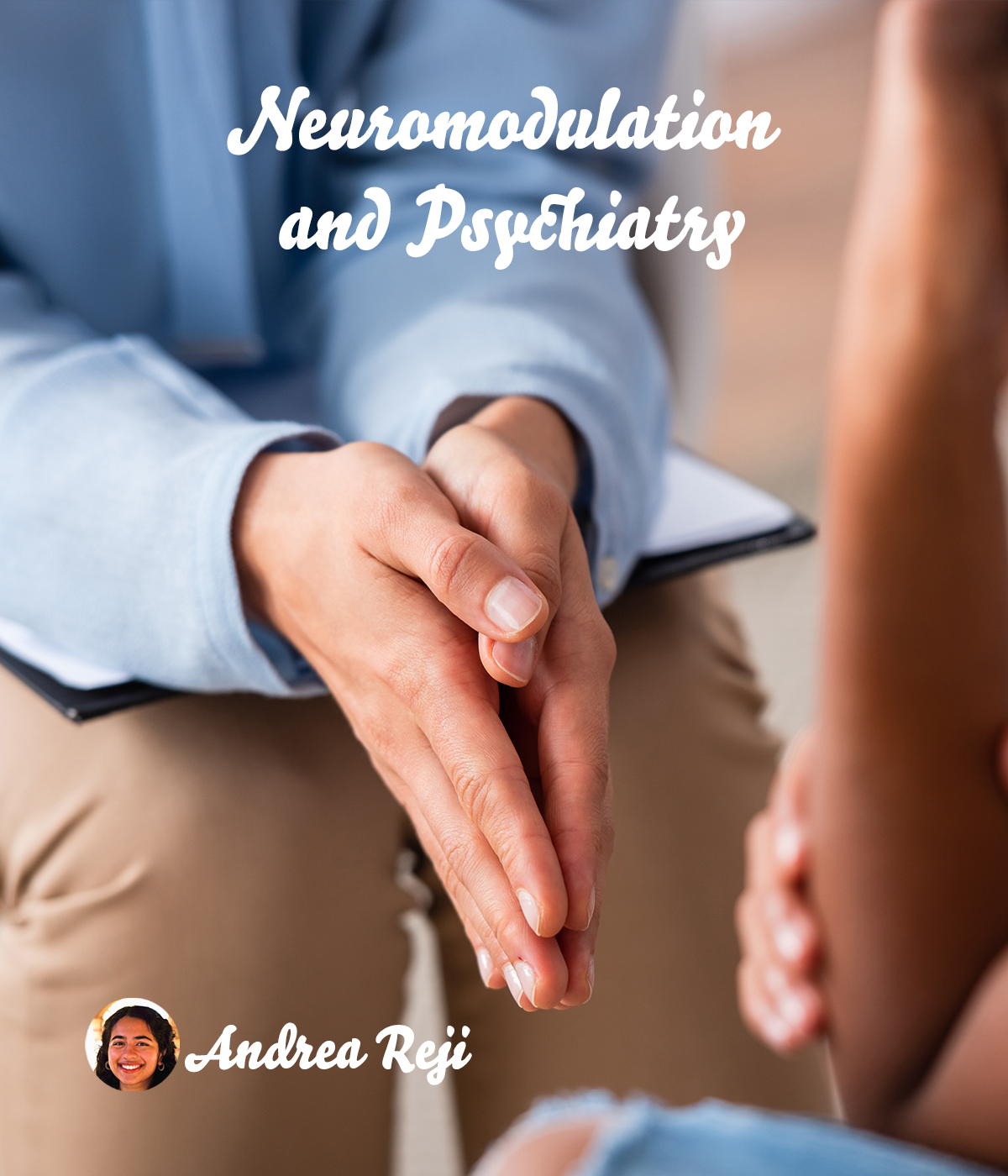“Could future depression treatments involve zapping the brain with no surgery required? Scientists are beginning to say yes. A promising field called neuromodulation is opening new doors in psychiatry.
Could depression treatments involving zaps to the brain without surgery yield positive results? Scientists are beginning to say yes. The field of neuromodulation is opening new doors in psychiatric treatment methods.
What is neuromodulation?
According to the National Institute of Health (NIH), neuromodulation is defined as the alteration of neural activity in either three types of nervous systems: central, peripheral, or autonomic. Neuromodulation works to improve neuroplasticity and allows for a restoration of brain network activity. What this means is that there are controlled electrical currents being applied to certain regions of the brain to modify the activity of the nerve.
According to a study done by the University of Toronto, there are 2 types of neuromodulation therapies: invasive and noninvasive modalities. The most common invasive modalities include the deep brain stimulation and the spinal cord stimulation methods. In terms of non-invasive modalities, the most common therapies include transcranial magnetic stimulation (TMS) and transcranial ultrasound simulation (TUS).
Psychiatric disorders cause a change in neural activity in the brain, thus the use of neuromodulation has allowed for the vision of restoring regular neural activity and altering the waves to make it return back to normal. Since the use of this method is relatively new for treating psychiatric diseases, each case is handled differently. Different frequency of signals, duration of signals, and what type of neuromodulation method to use is being studied. Researchers at Capital Medical University in Beijing discovered that when they increased the amount of electrical energy sent into the brain using alternating currents, the brain’s signals, called local field potentials (LFPs), got stronger. These signals help show how groups of brain cells are working together. Greater activity in certain regions of the brain like the hippocampus, insula, and amygdala were noted as a result. A combination of antidepressants and neural modulation yielded greater results in patients, showing neuromodulation techniques as an effective method in treatment plans.
There are some side effects to different type of neuromodulation techniques. Such include possibilities of seizures, fractures, headaches, and fatigue. Although extreme symptoms are shown in some cases, the effects of neuromodulation have a greater positive impact in treating disorders when comparing it to the negative side effects.
Promising hope?
There have been ethical concerns over such methods. The concerns of controlling an individual, changing who they are, and their thoughts, has been a controversial issue. Over a decade ago, the NIH released a journal stating the ethical concerns regarding an individual’s autonomy and it’s psychosocial impact being a problem of neuromodulation. However, recently, the utilization of neuromodulation, with the increasing rise of psychiatric disorders have promised some help to patients and have shown positive impacts. A patient who has done neuromodulaion, the Spinal chord stimulation, has said that he “feels free from pain” as neuromodulation aims to reduce pain.
The increase in neuromodulation therapy method research has enabled for many to hope to combat psychiatric disorders and live with better mental health. Neuromodulation methods are expected to evolve and increase in efficiency over time promising hope to those who are in need of it. This field is expected to grow and bring about new changes in the way psychiatric disorders are perceived and treated in the years to come.
https://www.sciencedirect.com/science/article/pii/S1878747924000163
https://pubmed.ncbi.nlm.nih.gov/23206688/
https://karger.com/pps/article/94/1/31/915919/Neuromodulations-in-Psychiatric-Disorders-Emerging
https://www.nature.com/articles/s44159-024-00291-3
https://www.neuromodulation.abbott/us/en/chronic-pain/hear-what-people-say.html#tabs-5dc39865ef-item-c9440383f2




